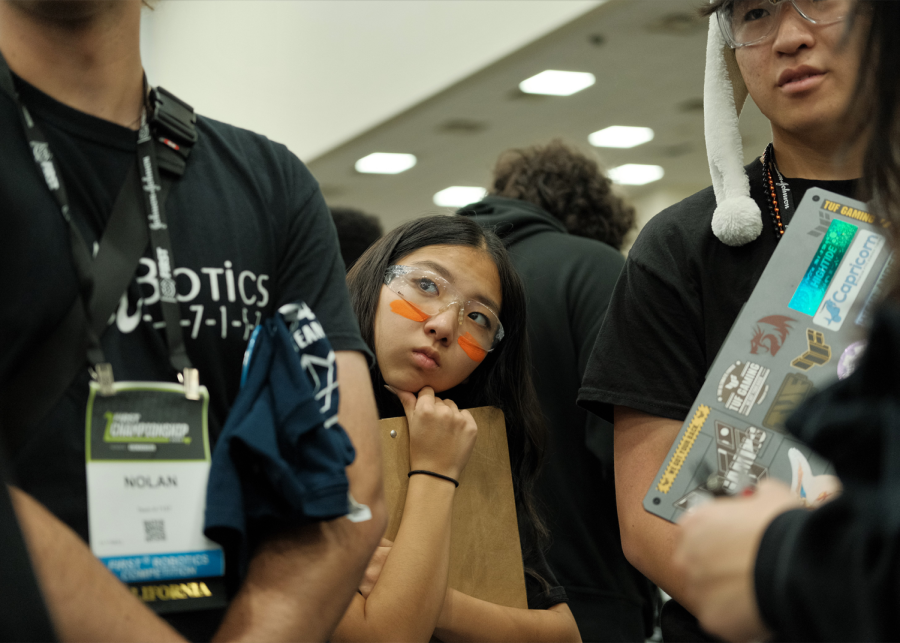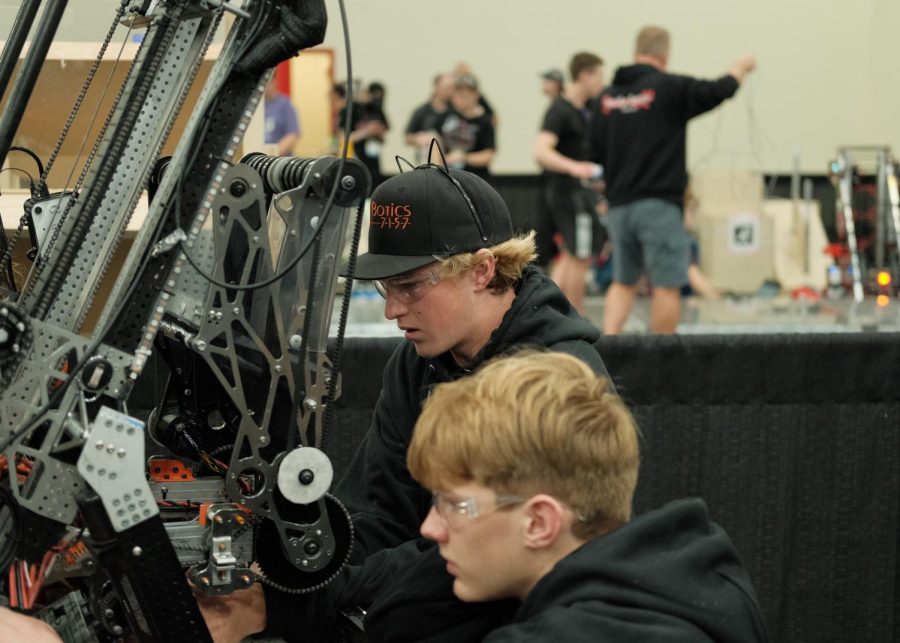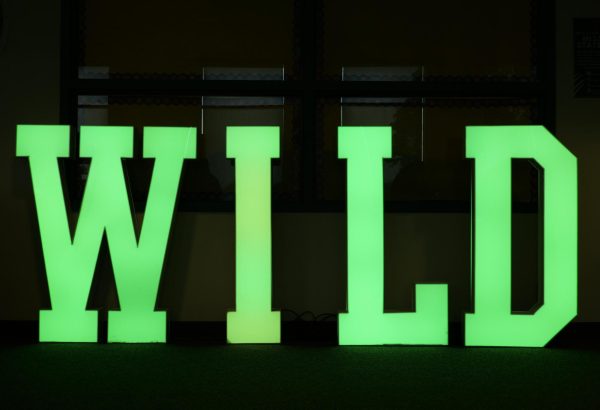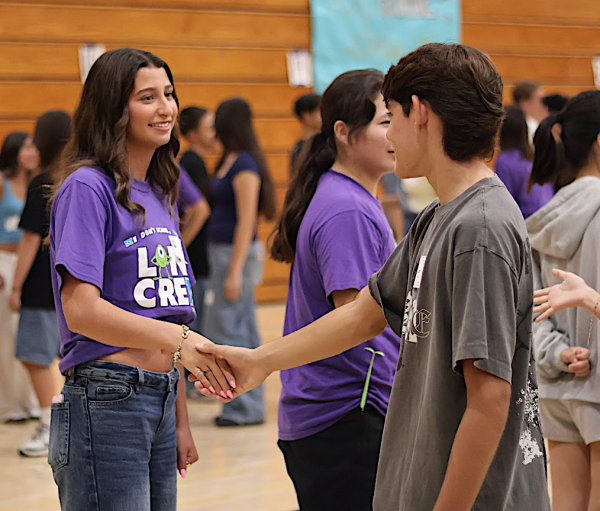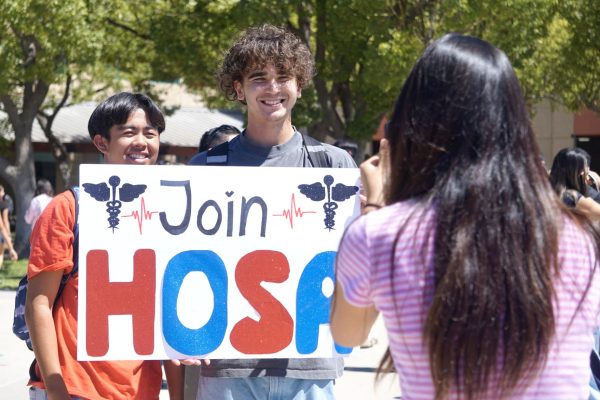Robotics Team 7157 Places Third at World Championships
Team 7157 member Lindsey Suzuki, freshman, attends a strategy meeting at the FIRST Robotics World Championships in Houston. The team placed third in the competition, its best-ever finish at the international event.
Robots in red and blue bumpers speed across the field, throwing purple cubes and bright yellow cones onto a scoring grid with one objective: to win the coveted blue banner, and ultimately, a world championship.
Team 7157 Mubotics, a joint robotics team of BOHS and Sunny Hills High School (SHHS) students, concluded their most successful season to date as third place semi-finalists in the Johnson Division of the FIRST Robotics World Championships, which took place in Houston from April 18 to 22.
Eric Eichinger, founder and head mentor of the team, takes “tremendous pride for what [the team] accomplished this year” and feels that the third place achievement is a “fitting reward for the hard work so many put in.”
The competition was held at George R. Brown Convention Center, a mammoth space (picture a high school gym on steroids) with space enough for 80,000 students and 600 teams from 26 countries to showcase their competitive robots.
“The venue felt like it was at least four football fields long,” Nolan Nicassio, senior and design member, said.
The tournament was split into three days: two days of qualification matches and one day of eliminations. Despite a couple of rough matches in the initial qualification rounds, the team made a comeback in match 83 by setting a division record of 202 points in qualification matches.
This year’s competition featured cones and inflatable cubes lined up at the center of a field. Two groups of three robots from randomly selected teams worked against each other as alliances to put cubes in grids and cones on rods of three heights. In the closing seconds, robots balanced on a charge station to gain ranking points. The team with the higher score advanced in the bracket.
“It was fun watching our team because we had been so invested in the bot,” Leon Kang, senior and programmer, said. Kang participated in “pit scouting,” which involved observing other teams and taking note of the robot’s condition to assist with the strategizing of alliance selections.
Each team had a 1000-square foot area of space where team members could store equipment, tools, and the robot, Tai Lung, a 150-pound contraption made of gears, hardware, and software.
On the day of eliminations, Mubotics was selected by the second-ranked team, Team 1730 Team Driven.
(In qualification matches in the first two days of competition, the alliances of three versus three teams are completely random. The job of the pit scouters is to determine which robots are consistently good since they may be ranked poorly due to the defective robots they are allied with. Along with having some technical issues with the robot, Team 7157 Mubotics were one of those unlucky teams set against tough competition, ranked in the bottom half. However, on the day of elimination matches, the top 10 ranked teams from qualification matches do “alliance selections,” where they get to pick the other two teams they want to be in their alliance. That Mubotics was “selected” by the second-ranked team meant that the second-ranked team saw how skilled Team 7157 was individually. Networking also factors in. Team members keep track of which teams are doing well initially, then make an effort to become close with those teams in hopes of increasing the teams’ chances of making it to finals with an ideal selection.)
Starting in the lead, Tai Lung raced against the clock to score game pieces but stopped in the last 30 seconds of the match due to wiring issues. The red alliance finished their fifth and final match with a loss, 172-159.
Seeing Tai Lung stand motionless on the field was tough for Team 7157 Mubotics. “My heart stopped with the bot,” Nicassio said.
Alex Fontanez, sophomore, lamented that the loss “did kind of suck.” However, despite falling short, Fontanez felt that “it was still an incredible experience to watch the finals” and is proud of how far the team has come because “the determination it takes to create something like [the] robot is admirable.”
Nicassio said, “It was crazy to meet teams from other countries that knew about us and the interest they had because of our successful season.”
Austin Yamamoto, junior and design lead, said of the teams’ journey to the world championships: “After dedicating hundreds of hours over the course of four months, I was happy to see our robot perform among the best robots in the world. It was like a proud parent seeing his child graduate.”
To qualify for the world championships, Mubotics won first place at the Aerospace Valley Regionals (AVR) as alliance captains on April 2, taking home the team’s first blue banner — the prize awarded to the winning alliance of the regional — back to the build room.
“Winning AVR felt like a huge payoff for the effort we had been putting in as a team for the last several years. It was the best we had executed all season as well and I felt like we were very much in our element,” Veronica Diaz, SHHS senior and programming lead, said.
“Everyone was putting in an average of 40 to 60 hours a week just to keep cranking out improvements toward our bot,” Jeffrey Tran, SHHS senior and build member, said. Looking back at the season as a whole, Tran feels that “All of the work was worth it.”
Senior Connor Tracey, Team 7157 Mubotics president, and driver (the person who controls the movement of the robot on the field), enjoyed “being competitive at the highest level of play.” After being on the team for four years, Tracey is “very proud to have led a team which has shaped a number of students into a competitive and respectful team of engineers.”
Your donation supports the student journalists at Brea Olinda High School! The contribution will help us purchase equipment, upgrade technology, and cover our annual website hosting costs.
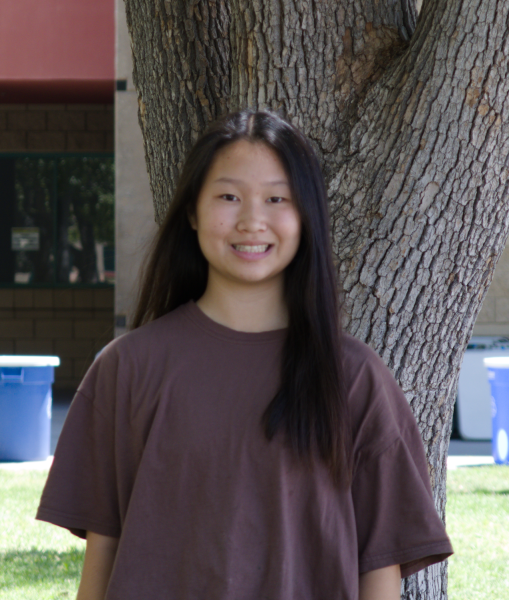
Ellen Kim, senior, has been a member of the newspaper staff since her freshman year and is excited to lead the staff as Editor-in-Chief. Alongside her...


